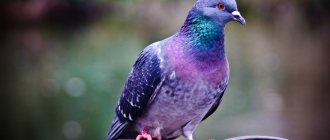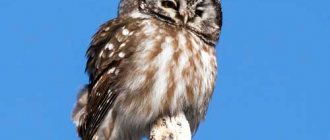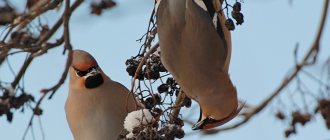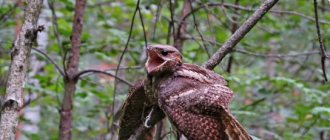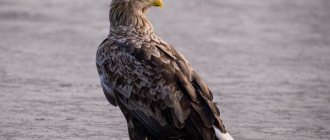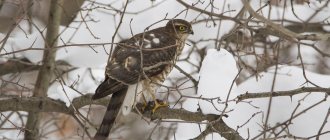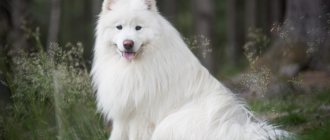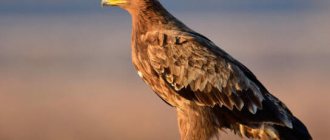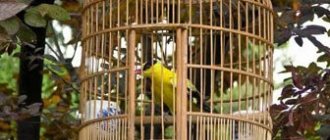There are a huge number of birds in Russia; birds can be found in all natural areas of the country. These are aquatic and forest, field and urban, tundra and arctic birds. Quite a lot of birds are rare and endangered species, so they are listed in the Red Book. Unfortunately, there are bird catchers who sell birds at pet markets. Those people who care about the conservation of nature should not buy birds, because otherwise they will finance this criminal and destructive activity for the fauna.
Birds of central Russian forests: habitats
Before considering the species of birds in the Russian forests of the central zone, it is worth noting that these include all living birds:
- In coniferous forests;
- In deciduous forests;
- In mixed forests;
- In bushes, as well as on the outskirts of cities and in parks;
- In fields and forest edges, near forest belts.
Birds of Russian forests in the middle zone
Dubrovnik
Another bird from the Bunting family lives in Northern Europe and Northern Asia. Its weight is 25 g, length – up to 17 centimeters, wingspan – 24 cm.
Due to its unusually bright plumage, the Dubrovnik resembles tropical birds. In summer, the head of males is almost black, the chest and throat are yellow. The back is brown, the belly is very bright yellow. There is a narrow chocolate-colored “collar” on the chest. Females have a brownish tint, with a yellowish belly and dark streaks on the sides and back.
Typical habitats are floodplains overgrown with shrubs, as well as meadows and forest edges with dense and tall herbs. Birds with a yellow belly fly to Southeast Asia for the winter. Her song is similar to ringing flute whistles.
Lark - a bird of central Russian forests
The most favorite bird of the Russian forests of the central zone is the lark. Her morning trill delights and captivates, gives peace and is even the favorite melody of birdsong on smartphones.
The bird itself is not attractive, “gray”, and hiding among the branches, especially in autumn. Larks usually nest in mixed and deciduous forests, in clearings and forest edges, as well as near swamps. They are migratory birds, but do not fly far for the winter. They fly towards the south until they find food, and nest for the winter.
When it comes to food for larks, everything is easy and universal - with the arrival of warmth, a worm, a bug, and in general any type of insect will crawl out to the surface. Here is the lark's food. And besides this, the birds do not disdain plants and flowers, and if there are populated areas nearby, then seeds, crumbs, and food waste are also used.
Rural residents attract larks to their fields because they destroy insects and some types of weeds.
It is worth noting that under good weather conditions, larks give birth to two broods per season, and thanks to this they multiply quickly. But since larks have enemies: a falcon in the sky, and a fox, weasel, ferret, and ermine on the ground, they die as often as they multiply quickly.
A small lark can be placed in a cage and housetrained; it will delight you with singing every day. But an adult, accustomed to the sky and space, dies at home.
Lark
Yellow wagtail
This small bird with a yellow belly is the smallest representative of its genus. Its weight is approximately 17 g with a body length of about 16 cm.
The yellow wagtail (pliska) is a small, slender bird belonging to the wagtail family. It lives in vast areas of Asia, Europe, Alaska and Africa. It stands out, like other types of wagtails, by its long tail, which constantly swings from side to side. A special feature is the bright yellow plumage in the abdominal area of adult birds (especially in males). It can often be observed in damp meadows or along the banks of reservoirs. She usually sits on the top of a stem of tall grass, constantly balancing with her widely spread tail.
The gray-green or gray-brown color of the feathers on the back is characteristic of females and males, but females are slightly duller. The light brown flight feathers are edged in the form of an ocher-colored stripe. The tail is dark brown, with tail feathers along the edges painted white. Above the eyes there are horizontal white stripes. Legs almost black.
Grouse - a bird of Russian forests in the middle zone
Do you know that the black grouse is rightfully considered the most original bird of the Russian forests of the central zone? It was he who liked to be depicted in paintings with hunting themes of the 19th and 20th centuries. There was always a massive hunt for them, because of the taste of the meat and unusual appearance (the red crest can be seen from afar).
The black grouse belongs to the pheasant family and is not distinguished by its beautiful singing. The bird is considered terrestrial, but in cold weather it moves to trees. It nests on grass and bushes, but in winter prefers hills and trees.
Black grouse do not fly away for the winter, and their flocks that have grown towards winter attract people with their beauty. Birds look especially luxurious on a snow-filled field. Birds feed on plant food, which they obtain well even in winter. Basically, black grouse can be found in thin groves and forests, in fields, in bushes, and they especially love birch groves. Depending on food, black grouse lead a sedentary lifestyle, but if there is no food, they immediately migrate. At the same time, it was noticed that the colder and stronger the frost, and the larger the flock, the more often the birds migrate.
Mating begins in black grouse in the spring, and the first chicks appear by the end of June, in a warm spring - by mid-June. For the first 10 days, the chicks are weak and can only jump, and after that they begin to learn to fly. At this time, male black grouse lose part of their feather covering during the molting process, cannot fly, and remain fearful and aloof from flocks. During the first days, the chicks are looked after by females, who tolerate this period more easily.
For the black grouse in the sky, the greatest danger is man, followed by the hawk. On the ground, the bird also has enemies: martens, wild boars, foxes, wolves and other predators. Due to its size, the bird is an attractive food for all carnivores.
Grouse
Arctic
Despite the harshness of the Arctic natural zone, its conditions do not deter local birds. Most of the local bird fauna is represented by marine and waterfowl species.
Arctic Russia
Ipatka
Belongs to the family of guillemots. Hypata has an unusual appearance, similar to a puffin (belongs to this genus). The body is predominantly black, with a white chest and eye area. Bright orange legs and beak. Its diet consists of fish, squid, and zooplankton.
Interesting: Birds are the lords of the air: list of interesting representatives, photos and videos
Ipatka
Great auklet
A beautiful and unusual bird from the order Charadriiformes. The great auklet is medium in size, weighing about 250 g. It has a dark brown back and a lighter chest. The orange beak stands out clearly, and on the forehead there is a high crest of feathers that bend forward.
Great auklet
Interesting fact : great auklets have a unique feature - they have special feathers on their necks that emit a citrus aroma. If a colony of auklets lives at a distance of about 1 km, you can clearly hear this smell.
Burgomaster
The second name is the great polar gull. It is noteworthy that the bird received its unusual name because of its lifestyle. Arctic gulls live near bird colonies and take a kind of “payment” from their inhabitants in the form of eggs and even chicks. This species is omnivorous. Glaucous gulls build their nests on rocks.
Burgomaster
Swift - a bird of central Russian forests
Swifts have long been considered a real delicacy among the birds of central Russian forests. Especially the black swift. Everything was taken to the limit, and the bird was practically destroyed. It took years for the population to recover.
The swift is a small bird that winters in warm southern countries and arrives in Russia with warmth. Due to the fact that the bird is small and a predator, its diet consists mainly of insects and small vegetation. Therefore, rural residents love her as a fighter against insects, but they do not like her in gardens - since she has a habit of spoiling berries and fruits.
Swifts nest in huge colonies, and they feed in large quantities. When approaching fields, they open their beak and catch insects with their beak like a net. Once in the beak, the insect is immediately swallowed.
Swifts most often arrive from wintering grounds in small flocks, and turn into a huge flock after rapid reproduction. The swift's enemies are the same as those of the previous birds - all types of predators.
Swift
Bird fauna of Russia
The bird fauna of Russia is represented by all species of birds that have been recorded in the country. This list contains 790 species. These include endemic species, that is, those that are found exclusively within the Russian Federation. For example, black crane, sandpipers, grouse, etc.
Birds of Russia, illustration
The total number of birds, taking into account subspecies, is 1334 geographical forms. It is also worth highlighting such categories as nesting (657 species) and vagrant (110 species). Migratory birds can be seen only when they arrive for the winter or migrate.
Kedrovka - a bird of Russian forests in the middle zone
Coniferous and mixed forests are home to a spotted and interesting bird – the nutcracker. It is considered the most interesting bird of the Russian forests of the central zone, due to its rarity. The bird brings great benefits to forests - stocking up on pine nuts for the winter, it hides them in the ground. In winter, naturally, all the nuts are not found, and excellent young shoots appear in the spring.
But the nutcracker’s diet includes more than just pine nuts. Also present are pine and spruce seeds, acorns, beech nuts, etc. But if there is cedar, there is no other food for the bird. That's why it got such an interesting name.
In breeding, the bird is interesting because it nests in dense, impenetrable forests, where it has previously prepared enough food for sustenance. Immediately after laying eggs, the female and male take turns incubating the eggs, thereby providing each other with the opportunity to feed. The female and the male prepare nuts for the winter in advance, and do not know where the other’s supplies are, thus they do not bring food, but let each other eat and fly. The female and male are monogamous; once established in the first year, they remain with each other until death.
Both the female and the male also feed the chicks, softening the nuts in their beaks and giving them to the chicks. The chicks grow quite quickly and go with their parents in search of fresh nuts. All small predators living in forests are considered enemies of nutcrackers. But the greatest danger to nutcrackers in Russia is still humans, due to deforestation and periodic fires.
Kedrovka
Tit
This rather beautiful bird with a yellow belly can be found not only in Russia. It lives in both Central Asia and Europe.
The back of the tit is colored yellowish-green, the abdominal part is yellow. A wide black stripe runs along the chest and belly. It should be noted that the birds of this species of Central Asia have some differences - their plumage has a more bluish-gray tint. The top of the head, throat, sides of the neck and part of the crop of Russian tits are shiny black, and the sides of the head are white. The wings are grayish-blue with a transverse light stripe. The tail is almost black with a bluish tinge. These yellow birds are big for their family. They reach a length of up to 13 cm, and their weight is about 20 grams.
The tit is not a migratory bird. It remains in its habitat throughout the winter, and only in extreme cold does it move closer to humans (this makes it easier to feed). For your information: in ancient times in Rus' there was a decree that imposed a considerable fine on anyone who attempted the life of this beautiful bird.
Woodpecker - a bird of Russian forests in the middle zone
And this bird is known not only in the forests, but in the cities! The woodpecker is the most memorable bird of central Russian forests. It is often found in forests, parks, alleys and even courtyards of multi-storey buildings. You can recognize it even without seeing it - by the characteristic knock of its beak on the tree. And all because the woodpecker feeds on larvae and bark beetles located immediately under the bark of the tree. This is why the woodpecker knocks on the tree - picking pests from the bark and making the tree healthy.
Woodpeckers nest in hollows and lay eggs there. During the mating season, woodpeckers form pairs that break up when the eggs hatch. During the first weeks, the chicks are naked and helpless and can survive solely with the help of their parents. But after the woodpeckers fledge and begin to feed on their own, the “family” breaks up and each one flies through the forests separately from the others.
The enemies of woodpeckers are not only predators, but also other birds. Even starlings and tits can drive a woodpecker out of their hollow, since they do not provide protection, but go into exclusive flight.
Woodpecker
Sparrow - a bird of Russian forests in the middle zone
Every family, every small child, etc. knows the little sparrow. The sparrow is the most common urban and forest bird in central Russian forests. Everyone knows what a sparrow eats - seeds, nuts, crumbs, small cereals, etc. But few people know that a small and remote sparrow is able to protect fields from locusts, and also eats all kinds of insects, and thereby saves agriculture from pests. Many people think that the sparrow is a city dweller, but in fact, sparrows live well in mixed forests.
Sparrows form pairs once and for the rest of their lives, after which they look for a separate nest, or nest nearby with other sparrows. Sparrows nest in crevices, abandoned nests and hollows. In everything where there is a recess and the possibility of shelter. After the pair has nested, they lay eggs and by the end of April small sparrows hatch. A month after birth, sparrows fed by a female and a male fly into adulthood. The parents, thereby freeing the nest from the chicks, hatch a new brood. In the warm season, up to 3 clutches from spring to winter.
Sparrow
Tit - a bird of Russian forests in the middle zone
The tit, of course, is a common bird in central Russian forests, but it is still more often seen in pictures than in the forest in real life. But her singing “zin-zin” can be heard not only in mixed and deciduous forests, but also in parks and alleys of cities.
The titmouse is not able to fly long distances, but is able to fly from twig to twig, from bush to fence, etc. Therefore, from the outside the bird seems nervous and cautious, but this is not its timidity, but its image of flight. Despite the monotonous, easily recognizable singing, many people like her trills, and those who like to relax in the forests are happy to stop in places where titmice sing nearby.
The tit is considered a wintering bird, but in winter it moves closer to people to make it easier to find food. Tits feed on insects, but when they are absent or in short supply, they eat grains and nuts very well. Predators are a direct threat to the clumsy birds, which often suffer from ground-based or aerial poultry eaters.
In April-May, tits find a pair and nest. A pair is almost always preserved for life, but there are also cases when pairs changed, or there were several females per male. The male looks after the female, feeds her and creates a nest, and if the female is interested in him, she joins in creating the nest, and upon completion of construction, lays eggs. They are incubated by both parents for about a month. Six months after the chicks appear, the babies become fully mature individuals, which begin to create their own pairs.
Tit
Bird conservation in Russia
The Russian Bird Conservation Union (abbreviated SOPR) has been operating in our country since 1993. This is a public environmental organization. Its main task is to preserve the species diversity of the bird fauna, as well as population sizes and natural habitats.
The SOPR includes more than 2,000 ornithologists (both professionals and amateurs), and branches are open in 64 regions of the Russian Federation. Thus, the activities of the Union extend to almost the entire territory of the country. The emblem of the SOPR is a species of the snipe family, the small curlew.
SOPR emblem
Under the leadership of the Union, special programs and projects aimed at environmental protection are being developed. Seminars, conferences are also organized, books, reference books, and information booklets are published. Bird counts are carried out regularly.
Nightingale - a bird of Russian forests in the middle zone
And, of course, the most singing bird of the Russian forests in the middle zone is the nightingale. His trills are so beloved by people that nightingales are often caught and kept in huge decorative cages.
As soon as it gets warm in central Russia, a nightingale flies in from the south and within a week begins its sweet-voiced singing, which you can’t help but fall in love with. This usually happens in the first days of May. By singing, males attract females and, having built a nest, help them nest to plant eggs. Singing also helps nightingales show their territory to other males, and unhinderedly hatch eggs and feed chicks without flying far from the nests.
Birds feed on insects, spiders, worms and a variety of berries growing in the forests. Nightingales especially enjoy freedom near rivers and lakes. But if there is no such food, they can also eat grains before the flight. But the bird stays far from the urban jungle.
Nightingale
Slender-billed
Distinctive qualities: the beak is thin, long, more or less bent. The fingers are long, especially the hind ones. They feed on insects and flower sap.
Dart frogs (pikas)
They deftly climb trees in search of insects, which they extract from the narrowest crevices. The famous beak helps them with this. The song is a melodic whistle, with a short final “blow”, the current motif is “tzit”, performed in high tones, more like a squeak.
Pikas also include mosquitocatchers and wrens - two numerous subfamilies close to warblers. All of them are wonderful singers, they are called flutists for the purity of their sounds and the richness of their performance.
In the photo there is a mosquito catcher
bird wren
Listen to the voice of the wren:
Honeysuckers and nectaries
In addition to a long beak, they have an elongated tongue, which helps draw out flower nectar. In addition, they feed on insects, fruits and berries. Honeyeaters usually have dark colors, while sunbirds have bright, festive colors, with many pearlescent tones. That’s why their names - malachite, orange-breasted, bronze, purple-bellied, red-throated - all speak of elegant plumage.
Swallow - a bird of Russian forests in the middle zone
The swallow is an infrequent visitor, but still one of the bird inhabitants of central Russian forests. It is worth noting that the swallow typically lives in deciduous forests and shrubs, and it never lives in pine needles. Swallows also like to settle in human buildings, since it is still easier to soak in them closer to people than in the forests.
The swallow feeds on insects, flies, dragonflies and ladybugs, spiders and grasshoppers, fireflies and small butterflies. But they themselves often suffer from predators such as falcons and hawks. Grains and grasses make up less than 1% of the diet. But what the swallow is good for in deciduous forests and near rivers and swamps is its ability to destroy the population of midges.
The bird is migratory and is a resident of forests, villages and cities only in the warm season. Swallows nest using straw, branches and clay, creating spacious nests for one season. Arriving the next year, they can nest in the same nest, but this is the exception rather than the rule. Upon arrival, a pair is formed that lays eggs, incubates and is responsible for feeding the chicks. After this, the pair breaks up and a new pair is formed the following spring.
Martin
Dentobeaks
Corvids
Some representatives of corvids are classified as songbirds, although the sounds they make are clearly not for everyone. Distinctive qualities: most of them have an awl-shaped beak, a beak at the end with a noticeable tooth-like notch. They feed on insects, some attack small vertebrates.
- Kuksha is the smallest bird of the family, similar to a jay, only a little smaller. Lives in the taiga forests of Eurasia. Their color has many gray-brown tones with reddish highlights; unlike jays, there are no white areas, wavy ripples on the wings and a tail of a different shade - duller. In addition, they behave much more modestly.
The song consists of low whistles and loud cries of “kzhe-kzhee”.
Listen to the voice of the cuckoo:
Paradise
Unlike the previous family, they are very beautiful with their bright plumage. It is difficult to imagine them as relatives of our sparrow. Most live in tropical regions - New Guinea, Indonesia, Eastern Australia.
- An outstanding representative of its family is the great bird of paradise. Her yellow-red robe is not only bright, but also opens up very beautifully when flying, sweeping up in a beautiful fluffy wave, like a fan, and her turquoise cheeks and white beak complete the beautiful image.
However, the males look like this, while the females are much more modest in their brownish-brown outfit, only slightly decorated with a white cap on their heads.
Birds of paradise are distinguished by their bright colors and unusual plumage shapes.
Sounds are also made mainly by males. We do not undertake to say that these are the most musical birds, but together with their chic appearance, the spectacle is mesmerizing.
Listen to the voice of the paradise flycatcher:
Shrikes
Small songbirds known for their original way of preparing food. They catch insects, small animals, small birds and even small reptiles, and impale them on sharp branches or thorns of plants.
Interesting! Despite their rather modest size, shrikes are mainly predators.
If the prey is not eaten immediately, the hunter returns to it later. The shrike family includes 32 species of birds of various types , colors, and habitats. They are distributed all over the world.
Often their names coincide with their geographical residence: Siberian, Burmese, American, Indian;
Or they are named according to external characteristics: red-tailed, gray-shouldered, white-browed, red-headed;
Pictured is a red-headed shrike
Either by demeanor or other qualities - the prosecutor-shrike, the governor-shrike, the Newton-shrike.
Shrike - prosecutor
However, they all have one thing in common - a strong beak, a predatory disposition and bold behavior. For the most part, they sing rarely, the song is an indistinct chirping. However, sharp calls of the male are often heard, which resemble the loud buzz of a wound watch.
Listen to the voice of the red-headed shrike:
Starlings
Small birds, most of them rather inconspicuous in appearance. Starlings are most often migratory birds. They are often called mockingbirds for their ability to imitate different sounds. Starlings often adapt to the singing of other birds and easily reproduce them, and so do the females. The structure of male singing is quite complex and strictly individual. It is absolutely impossible to confuse the voice of one singer with another.
Interesting! Among the starlings there are quite bright specimens - the golden-breasted spreo, the tricolored spreo or the magnificent starling, the amethyst short-tailed spreo. They live mainly in hot regions of Africa.
Amethyst Spreo
We happened to observe an ordinary starling with greyish, inconspicuous plumage. But we can enjoy his voice. It is with his song that pleasant work begins in the spring; we make birdhouses for him. If there is a starling in the garden, the insects rapidly decrease. He is not only a singer, but also a hard worker.
The common starling creates a spring mood with its chirping
Their trills and whistles, as well as sometimes not very musical creaks, meows and rattles, usually announce the arrival of a wonderful spring season.
Listen to the voice of the common starling:
Troupialaceae
The next number of our concert program is American orioles or troupials. The main colors are black and yellow, although some are surprising with a red head (red-headed troupial) or white plumage on the back of the head and wings (rice troupial).
Red-headed corpse
Rice troopial
There are also individuals that are completely black in color - mourning corpses. The sounds made by birds of this family are close in tone and reproduction to our oriole - quite musical, consisting of repeated trills and whistles.
Listen to the voice of the corpse:
Tits
In total, 10 species of tits out of 60 live in Russia. These are the tufted and eastern tits, the Muscovy, the common and white tits, the black-headed, grey-headed and brown-headed tits, as well as the yew and common tits.
Listen to the voice of the tufted tit:
It is believed that the Muscovy bird got its name not because of its habitat, but because of the plumage on its head that resembles a mask.
Listen to the voice of a Muscovite:
The blue tit has a second, most common name - prince
Listen to the voice of the blue tit (princelings):
Pictured is a yew tit
- We are well familiar with the family of these unpretentious birds from the great tit, which we all saw in winter not far from our homes. This is a bird close in size and shape to a sparrow, noticeably distinguished by its yellow breast and collar.
In harsh winters, they try to stay close to people, looking for warmth and food. Once upon a time in childhood, we made feeders and put pieces of lard there - for the titmouse. She sings tenderly and comfortably - “qi-qi-qi” or “pi-pi-zhii”. Experts distinguish up to 40 variations of the sounds it makes.
Listen to the voice of the great tit:
Orioles
This family mainly includes tropical inhabitants. In Russia it is represented by only two species - the common oriole and the Chinese black-headed one.
- Common oriole. Unsociable bright birds living in pairs in the crown of deciduous trees. Slightly larger in size than a starling. The male's plumage is golden yellow with charcoal wings and tail. The eyes are highlighted with a black frenulum-shaped stripe extending from the beak.
The common oriole is a very beautiful bird with bright plumage
Females look more modest - greenish-yellow above and grayish below. The singing of the oriole includes several dissimilar roulades. Either the sound of a flute, or sharp abrupt sounds like a falcon - “gi-gi-gii”, or the completely unmusical cry of a frightened cat. The bird is sometimes called a “forest cat.”
Listen to the voice of the common oriole:
- The Chinese black-headed oriole has even more brilliant plumage than the common one. The only black thing she has is her cap, the ends of her wings and a few feathers on her tail. The male announces the beginning of the mating season with a flute call “buolo”
Chinese black-headed oriole
Flycatchers
Quite small birds with a slightly flat and wide beak. The tail is straight, short, with a cutout at the end. What is common to all is the ritual of eating. They sit on the branches of a tree and fly up after a flying insect, and when they catch up, they swallow it on the fly.
On different continents, blue flycatchers, stonechat redstarts, wheatears, robins, bluetails, rock thrushes (which are also classified as flycatchers) and many other birds that make up a large family chirp, whistle, trill, and generally sing. This family includes 49 species, among which there are real singing professionals.
Blue flycatcher
Listen to the voice of the common wheatear:
Bluetail bird
Listen to the bluetail's voice:
- The most famous warblers in the world are, of course, nightingales. Of the 14 known species, gray and multi-colored, with a bright neck or completely red breast, we are most familiar with the common nightingale. This is a renowned and famous singer. He also has a second name - the eastern nightingale.
Since childhood, we remember G.H. Andersen's fairy tale “The Nightingale,” in which a living and talented bird drove death away from the sick emperor’s bedside. The number of her roulades far exceeded the range of sounds possessed by the expensive mechanical nightingale. However, in reality, perfection has its limits.
The nightingale is a songbird , and its singing since childhood has been associated for us with the concept of home and homeland.
The nightingale's singing is not an endless variation, but a set of repeated whistles and trills; the number of sounds can reach twelve and is repeated several times. It is appreciated for the purity of its sound and the quiet guttural roulades that emerge, as if touching the heart.
Listen to the nightingale singing:
- Many have heard the bluethroat , a small songbird that lives throughout Russia, singing in May. They live along river floodplains, so fishermen and hunters are well aware of the whistling of small birds.
Like many birds, they have clearly expressed sexual dimorphism. The male has a bright multi-colored chest made up of orange-brown, blue, black and red feathers. The rest of the body is beige-gray. The female is all covered with dark gray and light gray feathers, only on the chest there is a dark blue frill with a light insert.
The bluethroat is easily recognized by its blue breast plumage
Listen to the voice of the bluethroat:
- In the flycatcher family there is a warbler, which is called by different names, but under each of them it has become famous. This is a robin. Many people call it robin, alder, or dawn.
A cute little bird, the size of a sparrow. Its distinctive feature is a crimson-red breast, the color of the morning dawn. Hence the names. The rest of the plumage is gray with a marsh tint. The baby begins to sing at night, long before dawn, after the redstart.
The song is ringing, iridescent, and is considered one of the most beautiful. Both sexes sing, but the female has less variety in her tune. Being a migratory bird, it is one of the first to return to the northern regions.
Robins have many names, one of which is robin.
Listen to the robin's voice:
- The redstart is another wonderful member of the flycatcher family. The owner of a fiery red tail and belly. The back is gray, the forehead is sometimes white. Her behavior is different: she twitches her tail, then freezes for a while, and twitches again. At this moment, the bright tail resembles flames, hence the name redstart.
Pictured is a chased redstart
Listen to the voice of the redstart:
Blackbirds
Small and very active birds, densely built. They are distributed all over the world. What they have in common is the habit of resting with lowered wings, having a crouched appearance, as well as moving on the ground by jumping. Many blackbirds are migratory birds.
- Best known as a song thrush performer. His song is considered exquisitely beautiful. It is leisurely, sonorous, long-lasting, consisting of low and high sounds. The voices of songbirds would be deprived of one of the main soloists without such a warbler. “Have you heard the blackbirds sing?” And if not, be sure to listen, you will really enjoy it.
Pictured is a song thrush
Listen to the song thrush:
Slavaceae
The warbler bird, which gives its family its name, is one of the largest in its family. Its ability to move deftly in dense thickets and its simple plumage of gray-brown tones with a greenish tint allow it to go unnoticed even when dangerously close to human habitation.
However, the song of the warbler, rich, polyphonic, iridescent, reminiscent of the flow of a stream, is clearly audible from afar. “Slavochny talk” - that’s what people call it. Warblers, like most migratory birds, winter in Africa.
The songbirds of Russia are supplemented by several species of warblers out of 26 existing ones. These are the garden warbler (currant), gray warbler (talker), lesser warbler (miller), black-headed warbler, white-whiskered, hawk-tailed, desert and warbler.
Listen to the singing of the garden warbler:
Pictured is the Black-headed Warbler
Listen to the singing of the Black-headed Warbler:
Wagtails
There are only five genera in this family - pipits, golden pipits, wagtails, tree wagtails, and starling pipits. But they are widespread throughout the world. In Russia we are very familiar with pipits and wagtails.
- Wagtail. She has a long, narrow, straight tail, with the two middle feathers slightly longer. When hunting, the bird does not jump, like many others, but runs along the ground. When stopping, he moves his tail up and down (shakes his tail). The bird's plumage is most often inconspicuous (except for the yellow and yellow-headed wagtail), but the song is sonorous. Although perhaps not very diverse.
Listen to the wagtail singing:
Listen to the voice of the yellow wagtail:
Yellow-headed wagtail
Listen to the singing of the yellow-headed wagtail:
- Pipit, or gizzard, or oatmeal. 10 species out of 40 live in Russia: meadow, forest, steppe, field, mountain, spotted, Siberian, red-breasted, char, Godlevsky's pipit. All of them are distinguished by their protective coloring, which perfectly camouflages them in nature.
These are different variations of gray, brown, brown, olive and white tones. They blend so much with nature that even within a family, scientists have difficulty distinguishing between individual species.
Listen to the singing of the forest pipit:
Listen to the voice of the red-throated pipit:
The song of the skate is a real miracle. We can safely call him a “singing healer”; his voice, along with other birds, is used in neurological centers for rehabilitation.
Interesting! Pipit singing is known to have a calming effect.
Rook - a bird of Russian forests in the middle zone
A black, violet-tinged bird of central Russian forests is a delightful and mystical rook. Its population is growing rapidly, thereby destroying less aggressive populations of birds such as nutcrackers, tits, etc. It is immediately worth noting that the rook is a long-lived bird. The bird lives from 15 to 20 years. It was the rooks, and not the crows and ravens, that were trained by the healers, and they were considered witches' familiars. But in captivity, the rook lived the longest - up to 69 years! It is not surprising that this bird manages to get used to both the place and the owner. And this is precisely what excited the imagination of uneducated people.
Rooks love deciduous and mixed forests, which are in contact with fields, villages and cities. Singles also thrive in city parks. But in flocks they can be found only outside the city .
A pair of rooks nests high in the trees, first creating a huge rookie nest. If a couple has found a suitable but abandoned nest from previous years, both their own and that of other rooks, they make excellent use of them. The female incubates the eggs and the male feeds the female. The chicks are fed by both rooks and taught to fly. After the chicks mature, the pairs break up or remain with the flock, and the same pair nests together the next year. Rooks preferably feed on live food, but if this is not available, they feed on everything that is edible. Including small pests. The rook's worst enemy is the raven.
Rook
Red-headed wren
The size of the bird does not exceed 9 cm, weight reaches 7 g, but on average it is 5.1 g. This beautiful bird owes its name to the red spot on its head. Its back is yellow-green, the ends of its wings are dark, and its breast is gray-white. The head is black, with two stripes in the eye area and a bright crest.
The red-headed kinglet has a large head and a short neck, so that the kinglet usually resembles almost a ball. Distributed from Europe to Africa. It prefers to nest in broad-leaved forests, less often in mixed forests, but most of all it loves oak forests. Like all kinglets, it chooses small arthropods with soft shells for feeding.
7 0
Drozd - a bird of Russian forests in the middle zone
Another common bird in central Russian forests is the thrush. An interesting bird that we associate with resourcefulness and savvy thanks to literature. But in life the bird is not so agile and often suffers from the attacks of predators.
Blackbirds are omnivores, although they prefer plant foods in the form of berries and seeds. Due to their constant nomadic lifestyle, thrushes, eating berries and seeds in some places, carry the seeds to other places, thereby spreading the plant population in the forests.
Blackbirds live in absolutely all forests, bushes, thickets, etc. They live in large flocks, from which you can hear not only singing, but also characteristic informational sounds, thanks to which the flock hides from predators in an organized manner, or finds food. They eat all insects and small animals from the ground and trees. But the menu also includes buds, leaves, flowers and grains.
Depending on the type of thrush, they may nest and breed once per season or several times per season. They form monogamous pairs, but only for the chick-rearing season. Afterwards they mix in a flock and create new pairs. Blackbirds nest in the most unexpected places in the forest. From elementary alien nests, to hollows or depressions in tree stumps. They are used exclusively for incubating eggs, and then leave the nests, as they constantly migrate.
Blackbirds migrate south for the winter and return to their territories in the spring. Blackbirds have enemies: on the ground all the predators that live in the forests, and in the sky from the hawk to the raven, from the magpie to the jay, which destroy nests.
Thrush
Ordinary remez
The length of the body is 11-12 cm, weight - up to 20 g. Despite the fact that the remez resembles a titmouse with a mask pulled over its eyes, it still belongs to the same order of passerines.
Its back is brown, and its body itself is rusty-white. Makes a high and sad whistle. This is a migratory bird. From April to October, the remez moves around the European part of Russia and flies to the Mediterranean for the winter.
It prefers to settle in grass and bushes along the banks of ponds, lakes and rivers. There he builds fluffy nests in branches hanging over the water. The remez feeds on insects, spiders and seeds, which it finds on the ground and plant stems.
Jay - a bird of Russian forests in the middle zone
The jay is one of the birds of the Russian forests of the central zone, which practically does not catch the eye of Russians, since they live in small flocks, and their population is very modest. The jay has a habit of stocking up on acorns in winter. But since the bird is nomadic, most of it sprouts new shoots in the spring. This is more instinct than pragmatic reserves.
The jay is a predator, and in addition to small insects, it can covet other people's eggs or even small chicks. In times of hunger, a jay can even attack an adult bird in order to feed its chick. In the middle zone, the jay wanders and flies south for the winter. At the same time, jays increasingly stopped returning to the middle zone, leading a sedentary lifestyle in the south.
They nest, both creating nests and occupying other people's habitats. If there are birdhouses in the forests, they boldly drive out other birds and occupy the territory. Both parents incubate and feed the chicks, and also accompany them for several weeks after departure. The bird is monogamous, choosing a mate, once in its life it leads a nomadic lifestyle with it, preserving the mate, and supports in case of injury or illness.
Jay
Interesting facts about the tit
There are many interesting facts associated with this bird with a yellow belly (photo in the article).
- Tits often hunt small dwarf pipistrelle bats (bats), which are poorly intelligent and quite inactive after hibernation. The bird hits them in the head with its beak, and then eats all the insides.
- The tit is a cunning bird. She herself does not stock up on food for the winter, but she skillfully finds it from other birds.
- The most fearless and curious after forty are tits. They may well even attack a person if there is a danger to their offspring. And at the same time, this bird can be safely hand-fed.
- Tit parents share the responsibilities of feeding and raising the chicks equally. These gray birds with yellow bellies quickly raise their babies on the wing.
Starling - a bird of Russian forests in the middle zone
The favorite spotted starling is a bird of central Russian forests, and not just city parks. It is for their sake that children build birdhouses in large numbers every year. Starlings are nomadic birds that prefer to winter in the south, but some individuals fly from forests to cities, and thereby form a sedentary lifestyle.
The starling is a conquering bird, easily going on the attack not only to defend its territory, but also to capture the “inhabited” territory of another bird. A flock of starlings boldly attacks a predator, pecking it to protect the young.
The female incubates the eggs, but the male replaces her for a short time while the female looks for food. Two weeks and the little chicks are crying out for food. At this stage, the male is more involved, and regularly supplies food to the cubs with the female.
Birds treat food differently depending on their age. Chicks and young starlings prefer animal proteins, in the form of insects and bugs. But mature individuals add plant products to their diet, feasting on lard, bread, nuts and seeds. Cats and falcons are considered the most powerful enemies of starlings.
Starling
Birds of the Red Book of Kuban
The Red Book of Kuban first appeared in 1994, but was officially registered only in 2001. Now it has about 60 species of rare and endangered birds. It included almost all the birds that we talked about in the previous sections.
It makes no sense to list them again, and everyone can get acquainted with this list in our article Birds of the Red Book of Russia. But it is within our power to stop its further increase.
Grosbeak - a bird of Russian forests in the middle zone
And finally, the bird of the Russian forests of the middle zone, namely oak thickets, is the grosbeak. It settles exclusively in oak and hazel groves, as it feeds on the fruits of these trees. It can also feast on cherries if the habitat is close to human settlements. Sometimes it attacks fields of corn and sunflower, selecting grain crops.
Grosbeaks live in flocks, although their population is very modest. In spring, the birds form a pair and build a nest. After laying eggs, the female incubates them almost all the time, and the male feeds her. At the same time, the male sits down to plant eggs for a short time, while the female rests in flight and looks for food. But while the female does not express a desire to leave the nest, the male actively feeds her. The chicks are fed by both parents until the babies fledge and are ready for independent life.
In addition to acorns and nuts, the bird can eat berries, fruits, bread, etc.
Grosbeak
Birds of central Russian forests: interesting photos
In this section we present unusual and interesting photos of birds in the Russian forests of the central zone.
Songbirds of central Russian forests
Admiring birds in the winter - the beauty of nature is accessible to every person
Bullfinches are a rare but very beautiful bird found in central Russia
Flock of black grouse
How are sounds created?
Unlike ordinary birds, songbirds have a syrinx - a complex structure of the lower larynx, which has up to seven pairs of muscles. This organ is located in the chest, at the lower end of the trachea, closer to the heart. The syrinx contains a separate sound source in each bronchus. Vocalization usually occurs during expiration by moving the medial and lateral folds at the cranial end of the bronchus. The walls are pads of loose connective tissue, which, when air flow is introduced, cause vibrations that generate sound. Each pair of muscles is controlled by the brain, which allows birds to control the vocal apparatus.
The majority of songbirds are small or medium in size, modest in color and have thick plumage. The beak is devoid of wax. In insectivorous representatives, it is usually thin and curved. In granivores it is conical and strong.
Birds of central Russian forests - how to see: tips and reviews
Nikolai : My son and I go out into nature at any free time. What I like most is visiting the forest. We go for berries and mushrooms. But we always carry a phone with us to photograph birds, and now we already have an impressive album with the birds we have seen. My son noticed long ago that they live completely differently in the forests. They do not beg for food, but are proud and luxurious. Want to see more birds? You see yourself in the forest quietly.
Lyudmila : A few years ago, my husband and I were offered a chic and cheap housing option, with one drawback. The outskirts of the village, and immediately the forest. But how my husband and I appreciated these quiet walks through the forest! No, we are not trying to catch birds either in a snare or through a lens. We walk almost silently through the forest, enjoying the singing of birds and their beauty. A year ago, we placed feeders and birdhouses along our favorite paths, thereby attracting and acclimating our favorite birds to the proximity. And in the fall we have a whole tradition of saying goodbye to flocks of birds flying south! And then we help the birds remaining for the winter to spend it well-fed and warm.
Are you interested in birds and animals of the world? You may like our articles:
- Birds of the tundra and the Arctic: name, photo, brief description;
- Desert birds: names, photos, brief description;
- Cuckoo bird: description for schoolchildren, photo, bird voice
